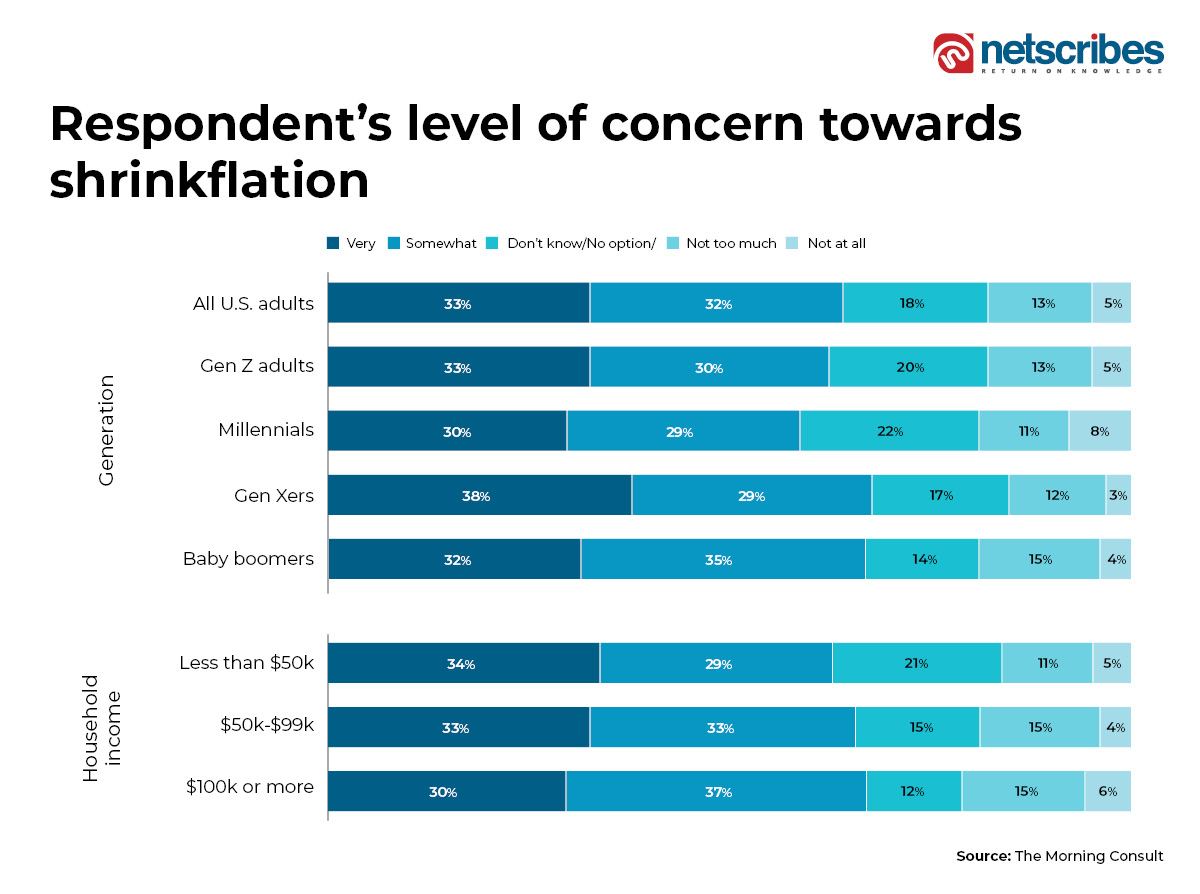Is your favorite cookie suddenly looking a lot smaller than usual? Is that bag of potato chips offering way more air than usual? All thanks to the ‘shrinkflation’ wave that’s gripping consumers globally.
What is shrinkflation?
The term shrinkflation refers to a situation in which a product’s size shrinks but its price remains the same. An increase in the price immediately catches the consumer’s attention. But they are less likely to notice if the price stays the same, and its volume decreases slightly over time.
Shifts can be as minor as the pages in your notebook reducing from 1000 to 800. Perhaps the cold drink at your next-door grocery store has changed its standard quantity from 800 to 750 ml. Your average chocolate bar size has reduced from 60 grams to 55 grams. All without a reduction in price. Not giving it too much thought, you, the consumer will most likely let this go without a second thought.
Here are some examples:
- Coca-Cola, in 2014, reduced its bottle size from 2 liters to 1.75 liters
- In 2010, the weight of Toblerone bars was reduced by Kraft to 170 grams from 200 grams
- Tetley, in 2010, reduced the teabags in one box to 88 from 100
While this is a common strategy in the consumer goods industry, it has recently become a trending topic across the internet. So much so that the term has made its way to the Merriam-Webster dictionary.
But why is shrinkflation becoming commonplace? And is it really going unnoticed by customers?
Our consumer research team put together some key reasons and evaluated the impact of shrinkflation on consumer sentiment.
Causes of shrinkflation
In a post-pandemic market, shoppers are working hard to save money. In fact, 79% of US adult consumers state that they take an active effort to save up on groceries. Brands cannot afford to raise prices in this scenario, where shoppers are spoilt for choice and more aware of their spending than ever.
Two main reasons seem to be prompting manufacturers to shrink their products:
- Increased manufacturing cost
Costs of labor and raw materials are rising, increasing production costs. This has compelled manufacturers to adopt shrinkflation as increasing costs can potentially hamper their profit margins. To tackle this, they reduce the product quantity while maintaining the same price.
- Competition
Due to an increase in competition and to keep customers coming by keeping prices the same, companies adopt the shrinkflation strategy. This enables them to maintain the same prices, saving consumers the burden of increased costs.
Impact on consumer sentiment
A recent survey conducted in August 2022, reveals US consumer sentiment and response to shrinkflation. As illustrated in the graph, only 33-38% of respondents seem very concerned about the trend. Almost half of the respondents are unaware.

Related reading: How sentiment analysis can help companies deliver improved customer experiences
Increasing consumer awareness: In a study done by Voxpopme’s Influence market research online community, 81% of the respondents had noticed shrinkflation while buying the products. According to the Yelp Economic Average report, shrinkflation experiences are being reported by consumers in the reviews posted on the platform.
Sense of deception once aware: The reduction or changes in the product quantity might not be noticeable to the consumers. However, they might feel cheated once they come to know the truth. Some of the more aware consumers feel shrinkflation is sneaky as the same packaging is been used by the companies but gives consumers less quantity.
Brand switching: Once on the customer’s radar, they’re not taking kindly to the spreading shrinkflation wave. They’re responding by switching brands or buying in bulk.
Consumers feel the highest shrinkflation exists in snacks and more than 50% of adults from the US have noticed it. Consumers are likely to be extra sensitive to this category going ahead. Some consumers are looking for different products or brands to combat shrinkflation.
Other than snacks, consumers are noticing shrinkflation in pantry items, meat, bread, pastries, and frozen foods. In response to shrinkflation, 33% of the consumers have chosen to purchase in bulk instead of small packages, 48% of them are gone for a generic brand while 49% of them have purchased the product from a different brand. Around 3 in 10 adults, when noticed shrinkflation, have stopped purchasing from the specific brands.
Today’s customer is aware and cautious. Brands will have to tread lightly when it comes to playing with consumer psychology. Transparency is the way to go. Conscious consumers make conscious choices. One misstep can not only lose customers but also ruin your brand reputation.
Worried about taking the right steps towards your accelerating business growth? We’re here to help!
Know more about Netscribes’ Social Media Analytics and Consumer Research capabilities.






